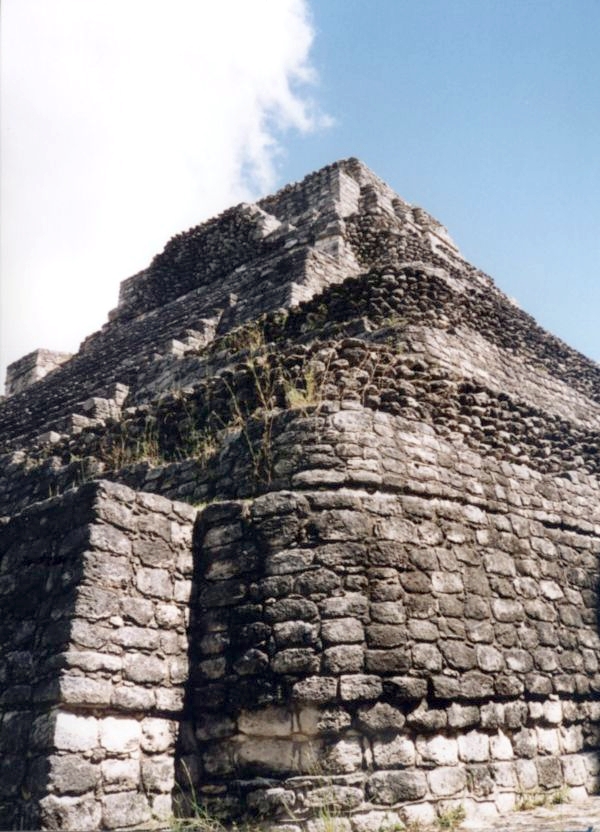Chacchoben means “red corn” in Mayan. Largely unexplored until 1999, the Mayan city of Chacchoben dates from 360 A.D., during which time it played an important role in the distribution of such precious items as wood, jade, and exotic birds. Chacchoben was settled about 200 B.C., so it is quite an old area, but the current buildings date to around 700 A.D.

This was the first pyramid you see when you enter and leave the complex.
Notice the vegetation hasn’t been completely removed.

We arrive for our tour. After viewing this first pyramid, we went around it, into the ‘forest’
behind the pyramid (to the left in the picture), and entered the main plaza.


The back of that first pyramid

Back behind the first pyramid, the Maya had built steps and platforms
and broad walkways – now all buried and covered by vegetation.



Realize, the Yucatan is an entirely flat land! All these
hills and platforms were built by the Maya.

After we passed through most of the complex under the trees, we arrived at what appears to be a hillside. If you look above the “hill,” you’ll see the top of the site’s main pyramid. This “flat-topped hill” the pyramid sits on was also built by the Maya. Notice, in the following pictures the size of the platform, and you’ll get a feeling for how much work that must have been before they ever even got to building things on top of it.


The steps we climbed to reach the major platform.




The temple to the moon, or so the guide said. This pyramid, too, is built on top of that platform, off about 100 feet to the right, as you faced the larger pyramid.

It looked to be about 4–5 stories tall. Behind the temple was a walkway from one corner to the other, about 3–4 feet wide, and bounded on one side by the pyramid, and the other by the 18-or-so foot drop off the platform.

These are the stairs we climbed down Notice the pyramid at the top. Remember, the entire “hill” was built by the Maya. There is a woman sitting at the bottom right, to give you a sense of the scale.







